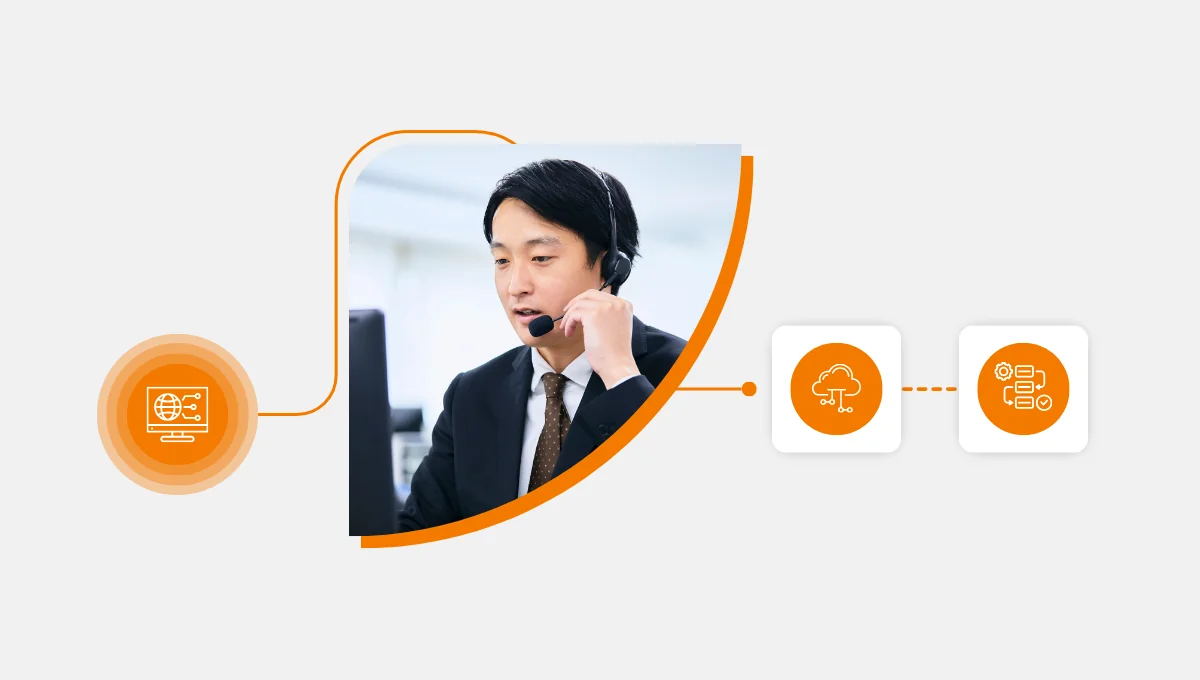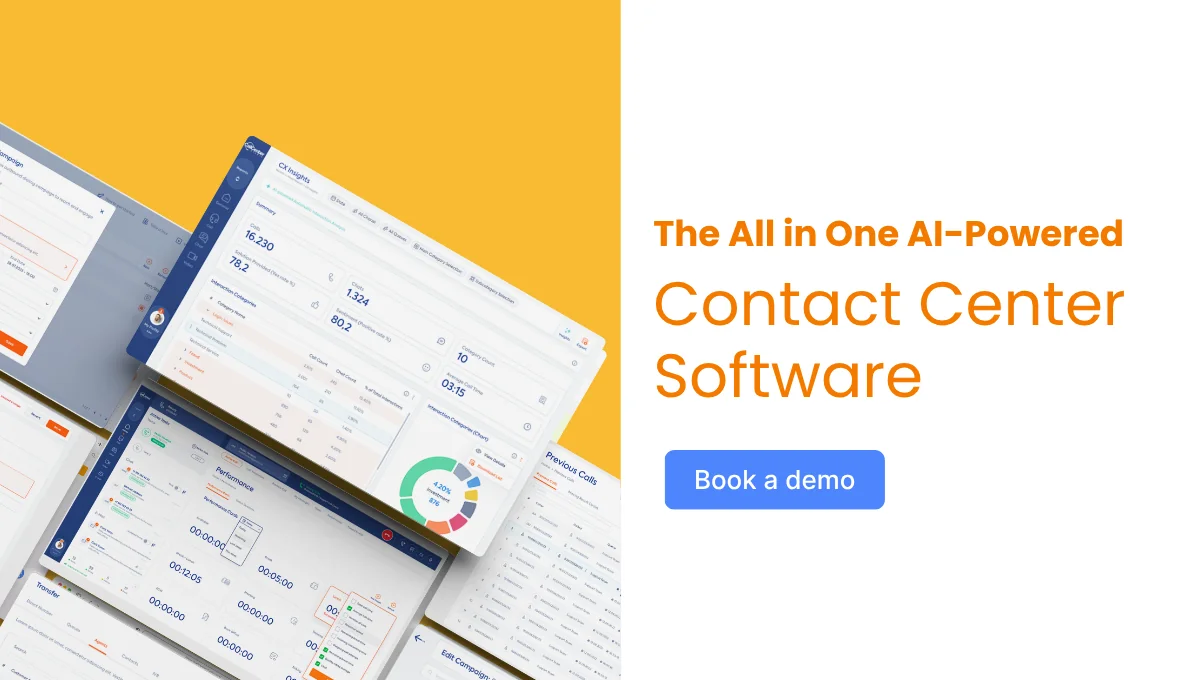Modern businesses rely on smooth communication both inside the company and with customers.
UCaaS and CCaaS are two key models that support different aspects of enterprise communication. If you’re not sure what those acronyms mean or which solution your business actually needs, don’t worry.
This guide breaks down the difference between UCaaS and CCaaS in simple terms, so you can make the right choice without digging through tech jargon.
What is UCaaS?
Unified Communications as a Service is a cloud-based system that pulls together all your team’s communication tools: voice calls, video meetings, chat, and file sharing, into one streamlined platform.
What can you do with UCaaS?
- Collaborate more easily: No more hopping between apps. UCaaS puts chat, video, and calls in one place so teams can work together without tech getting in the way.
- Work from anywhere, hassle-free: Whether your team is remote, hybrid, or fully in-office, UCaaS gives everyone reliable access to communication tools from any device.
- Cut down on IT headaches: Say goodbye to patching together multiple platforms or maintaining legacy phone systems. UCaaS simplifies your tech stack and reduces maintenance work.
- Scale as you grow: Need to add new team members or locations? UCaaS makes it easy to scale up without adding complexity.
UCaaS for business is all about helping your teams stay productive and connected, wherever they are.
You might want to explore UCaaS if:
- Your team is remote or hybrid
Everyone needs to stay connected, no matter where they’re working. - You’re juggling too many tools
If your team is bouncing between Zoom, Slack, email, and a phone system. UCaaS helps pull it all together. - You’re growing fast
A scalable communication system will save you headaches as your team or operations expand. - You want to simplify your tech
One platform means less time managing systems and more time focusing on the work.
A Quick Case for UCaaS Use
Take a mid-sized consulting firm with offices in three cities and a growing number of remote employees.
They used to rely on a mix of tools: Zoom for meetings, Slack for messaging, and a traditional PBX phone system for calls. Communication was fragmented and hard to manage, especially for IT.
✔️They switched to a UCaaS platform: One solution that combined video, voice, chat, and file sharing. Now, employees can start a chat, turn it into a video call, share documents, and loop in others without leaving the platform.
Remote workers feel more connected, meetings are easier to schedule, and IT finally has one system to manage instead of juggling five.

What is CCaaS?
Contact Center as a Service is a cloud-based tool designed for customer-facing communication. Think phone support, live chat, emails, and even social media. All is managed from a single platform.
What can CCaaS do for you?
- Route calls smartly: Automatically send incoming calls to the right agent or department, saving customers time and avoiding miscommunication.
- Keep customer conversations connected: See the full history of every customer interaction across all channels, so agents always have context.
- Work with your favorite tools: CCaaS platforms often plug into CRMs like Salesforce or help desks like Zendesk, so your agents don’t have to switch tabs constantly.
- Track performance in real time: Built-in dashboards and analytics help you keep an eye on wait times, agent productivity, and customer satisfaction.
CCaaS for customer service is designed to create smooth, consistent experiences no matter how customers reach out. CCaaS might be the right fit if:
- You run a call center or support team
These platforms are built to handle lots of calls and messages efficiently. - Your support happens across multiple channels
CCaaS helps agents respond to emails, chats, social media, and phone calls. - You care about metrics like CSAT or first contact resolution
Tracking performance is easier with built-in analytics. - You’re looking to automate support
Many CCaaS tools come with AI features like chatbots or predictive routing.

UCaaS vs CCaaS: Core Differences
Let’s compare two systems in a table so you can make a decision easily.
| Dimension | UCaaS | CCaaS |
| Primary Audience | Internal employees | Customer support and sales agents |
| Main Use Case | Team collaboration & communication | Customer engagement & service delivery |
| Channels | Voice, video, messaging, file sharing | Voice, chat, email, SMS, social media |
| Key Integrations | Office suites, calendars, cloud storage | CRMs, helpdesks, ticketing systems |
| Outcome Focus | Productivity & operational efficiency | Customer experience & support performance |
In short, unified communications vs contact center tools come down to this: UCaaS is for internal teamwork. CCaaS is for customer service.
Can You Use Both?
Absolutely. A lot of businesses combine UCaaS and CCaaS to support both their teams and their customers.
Together, they let you:
- Move smoothly from sales to support
- Share data across platforms
- Keep things simple for employees
Some vendors offer both in one bundle. Others integrate well with APIs.
Case for Using Both UCaaS and CCaaS
Let’s say you’re running a nationwide home services company. You have multiple teams and all working in different locations. They are:
- Dispatchers,
- Technicians,
- Customer support, and
- Sales reps.
UCaaS is implemented so your internal teams (like dispatch and technicians) can message, call, or hop on a video chat instantly. No one gets left out of the loop, and project coordination becomes a breeze.
Meanwhile, your customer support team uses CCaaS to:
- Manage calls,
- Website chat, and
- Social media messages.
All in one place.
When a customer has a question or needs to reschedule, support agents have their history on hand and can respond fast.
These two systems talk to each other. So when a customer call needs follow-up from the field team, it gets handed off smoothly. That’s the power of combining UCaaS and CCaaS in a real-world operation.
- UCaaS helps your teams collaborate and stay productive.
- CCaaS helps your customer-facing teams deliver great service across channels.
Use one, use both, it all depends on how your business communicates.
Thinking about your options?
Book a demo and let’s explore what makes sense for you.





